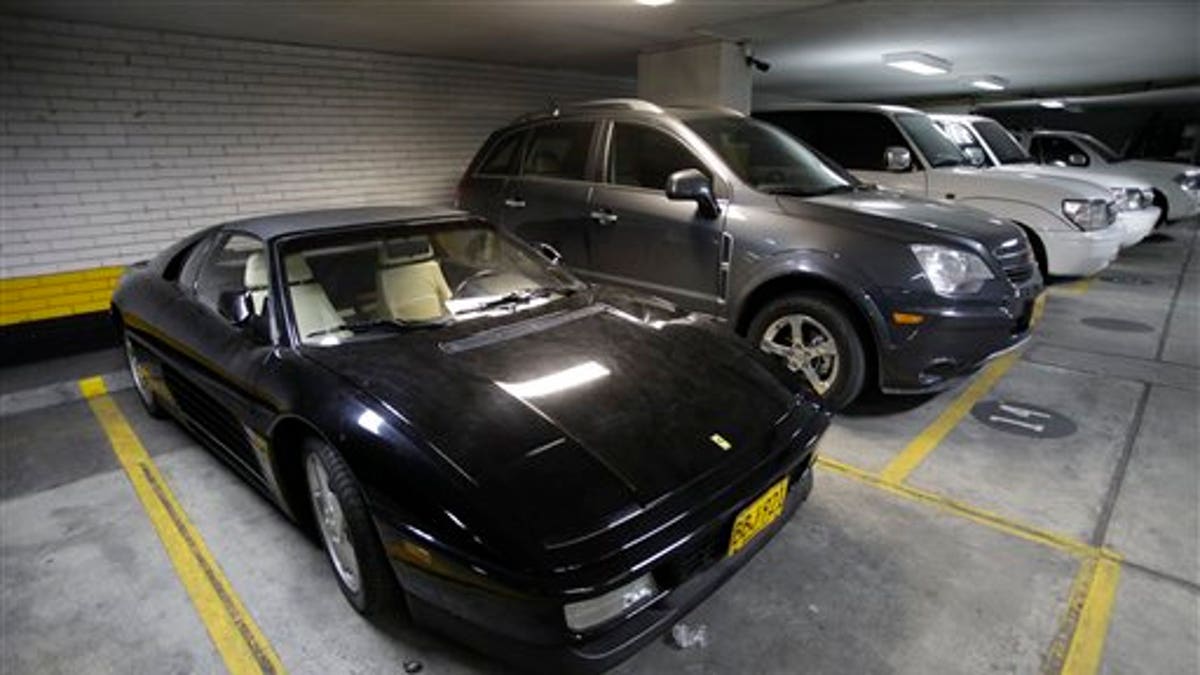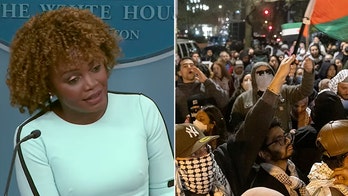
Jun 9: A Ferrari seized by the National Drug Office, or DNE, from a Colombian drug lord, in Bogota, Colombia. Two decades after it was created, Colombia's President Juan Manuel Santos has decided to scrap the DNE because of agency mismanagement. (AP)
After police gunned down the notorious Colombian drug trafficker Gonzalo Rodriguez Gacha in 1989, his sprawling cattle ranch was among the first of thousands of properties seized from drug lords to come under control of a unique state agency.
Two decades later, the 1,340-acre (542-hectare) ranch has literally disappeared, shrinking bite by bite as neighbors kept extending their properties into it in the absence of state control.
The story of the ranch mirrors that of the National Drug Office, or DNE, which was supposed to manage it and other seized assets of the illegal narcotics trade.
But 20 years after the DNE was established, billions of dollars in drug assets that the government planned to use to benefit crime victims and law enforcement have simply disappeared, officials say. The agency itself has been so hampered by misappropriation, mismanagement and maddening legal challenges that President Juan Manuel Santos has decided to scrap it.
Interior Minister German Vargas said a decree dissolving the agency would come soon. That will leave the Finance Ministry with the task of sorting through a list of 95,000 assets to determine what remains, and how much has been plundered and by whom, says the DNE's final director, Juan Carlos Restrepo, whom Santos appointed in October shortly after taking office.
- “Anonymous” Hacks Colombian President’s Facebook, “V for Vendetta”-Style
- Colombia Enacts Victim’s Law to Address Losses
- Paramilitary Gangs Contribute to Surge in Violence in Colombia
- J.Lo and Marc Split, Massachusetts DREAM and the Unstoppable Boxer: It’s The Week In Latino News
- Colombia Captures Drug Smuggling Submarine
- Faces of the Immigrant Archive Project
"Supposedly we should have a large amount of jewels, all the Rolex (watches) encrusted with diamonds," Restrepo said, sighing. "But I'll tell you, if ranches have been robbed, why wouldn't a Rolex be pilfered?"
The list of assets includes a $140,000 Ferrari, multimillion-dollar homes, a hotel, small planes, jet skis and paintings by famed Colombian artists.
What is certain, Restrepo and others at DNE say, is that billions of dollars worth of assets have disappeared. Prosecutors will try to determine who took what, and then the Finance Ministry will sell off the remaining assets at auction. The proceeds are supposed to be used to pay reparations to victims of Colombia's long-running internal conflicts, including those forced from their homes and relatives of the more than 50,000 slain.
The total value of the seized assets is unknown, as is the location of numerous properties of drug traffickers. Many have been registered in the names of third parties to confound law enforcement. Some properties have been sacked. Others have fallen into disuse, their value deteriorating.
The DNE "is a place where the worst of the nation is in confluence," Restrepo said. "Corruption and gangsters are there."
The 46-year-old lawyer said that just a few days after his arrival, after a preliminary look at reams of documents, he realized he had come upon "the mother camp, the starship, of corruption."
He immediately recommended that Santos have police investigators turn the place inside out in search of evidence of malfeasance.
A first surprise, he said, was discovering that while the DNE had 400 employees, at least 600 people were empowered not only to access the general inventory but also to amend it.
"Someone could erase a good, could change its value, its status," Restrepo said.
Included on the list were 15,000 automobiles -- yet not one belonging to Pablo Escobar, the infamous Medellin drug lord slain by police in 1993. Old photos of Escobar's ranch showed him with at least a half-dozen luxury cars.
No one has been charged with any crimes yet but court investigators are looking into allegations that at least 13 current or former legislators tried to name friends or relatives as administrators of seized properties.
Not all has been lost. The DNE sold $205 million in assets between 2007 and last September, principally apartments and businesses, including national department store and pharmacy chains.
Proceeds have gone to build or expand prisons. Seized vehicles have entered the fleets of city and state governments.
The luxurious seven-story Monaco apartment building where Escobar once lived with his family has been a drug rehabilitation center and is now in the hands of the national police.
A 355,200-sq.-foot (33,000-sq.-meter) complex in Medellin once owned by Fidel, Carlos and Vicente Castano, brothers who trafficked drugs and led a right-wing militia, now houses a public TV station and hosts movie screenings and exercise classes. The property has classic narco touches, including a winding staircase and oyster-shaped, gold-painted whirlpool spa.
Such holdings are the exception. Hundreds of expropriations are tied up in court by legal challenges.
After the first seizures in 1996, traffickers "organized teams of very good, sophisticated lawyers," said Carlos Medellin, who was justice minister at the time. "What ensued was a very drawn-out and complex process" in which obtaining an outcome favorable to the state took years.
Medellin praises Santos for introducing reforms last month that he believes will speed the process from an average of eight years to just a matter of months.
Authorities have identified more than 1,900 square miles (at least 500,000 hectares) across the country that belonged to drug traffickers, Restrepo said, and at least 150 square miles (40,000 hectares) have been obtained by the state.
It was while examining property records for prominent traffickers that authorities came across Rodriguez Gacha's ranch, "Mi Mazatlan," said Jorge Enrique Velez, the superintendent of notaries and registries.
In such cases, neighbors and others sometimes encroach on a parcel or bribe officials to pass ownership to them, Restrepo said.
The DNE itself allows private individuals to administer many seized assets in a kind of rental, but Restrepo said many of them failed to pay the required monthly fees.
Retired Gen. Luis Enrique Montenegro, who headed Colombia's domestic intelligence agency when law officers were dismantling the Cali cartel in the 1990s, said seized assets in those days often disappeared because "no one did an official inventory."
Luxury items including Persian rugs, jewelry and other top-shelf items were snatched, he said.
The DNE has passed scores of works by renowned artists such as Fernando Botero and Salvador Dali along to the National Museum, though the museum has returned at least 21 of them, "either because they weren't originals, lacked artistic value or were being returned to the owner," said Cristina Lleras Figueroa, the museum's curator.
When the DNE is finally dissolved, Restrepo said, there may be a massive sale of assets.
In the end, the job of trying to secure and sell off property seized from criminals has turned out "to surpass the capabilities of any agency," Restrepo said.
"The task of administering the assets of gangsters is one you couldn't even expect the Vatican to be able to do."
The Associated Press contributed to this report.
Follow us on twitter.com/foxnewslatino
Like us at facebook.com/foxnewslatino




